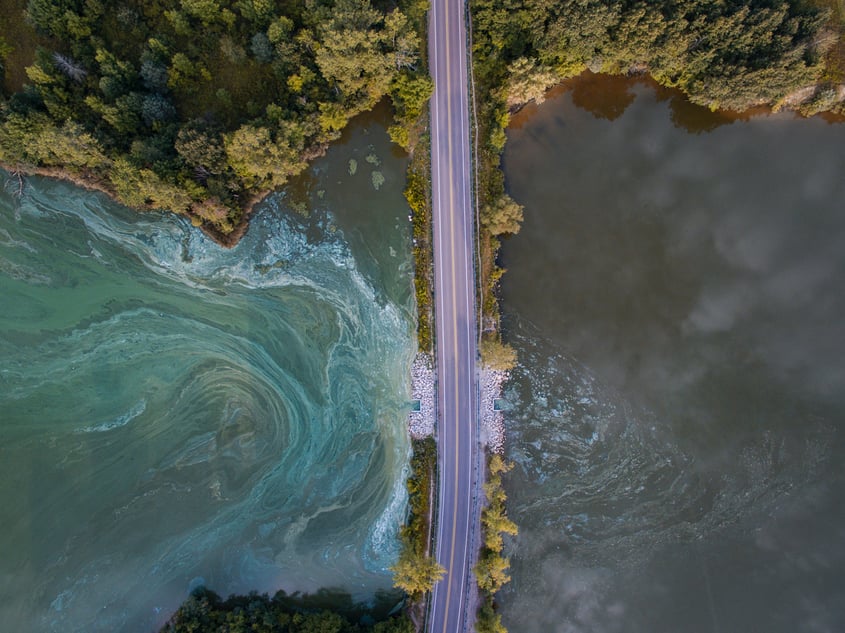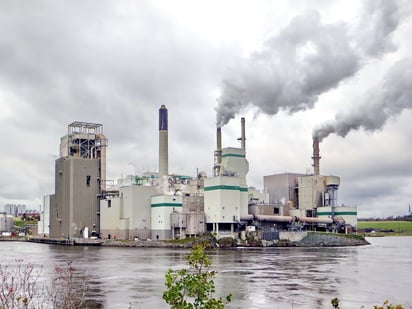
If you’re American, there’s a 95% chance you have these invisible, killer chemicals somewhere in your body. They’re called PFAS.
What are these mysterious chemicals, how did they get in our bodies, and what does this have to do with our water supply? Let’s take a look.
It shouldn't be a surprise that in today’s world, carcinogens lurk everywhere. And while we don’t want to freak you out, there’s a particular chemical lurking in the American landscape that we should all know about.
First off, let’s agree to just use the shortened version of the group of chemicals - PFAS.
If you want to know the long version, they are technically called per- and polyfluoroalkyl substances (PFAS). Basically, these are a group of man-made chemicals that have been in use since the 1940s and also include such tongue twisters as perfluorooctanoic acid (PFOA) and perfluorooctanesulfonic acid (PFOS). Not to burden you with too many acronyms, but PFOA and PFOS are important to mention, as they are the two most produced and studied of the PFAS chemicals.
So now that we have the nomenclature all set, what we need to know is that PFAS is used in a variety of industries around the world and in a dizzying amount of consumer products.
Worse, PFAS are persistent in both humans and the environment. Persistent, in the scientific community anyway, is actually a pretty frightening term. It means PFAS builds up over time instead of breaking down. So instead of disappearing or disintegrating with passing years, layer upon layer gets added and sticks around...forever.
So Where Does PFAS Come From?
So here’s the bad news. At this point in human history, PFAS is nearly everywhere.

These chemicals have been found in nonstick pans, food packaging, waterproof jackets, personal care products, microwave popcorn, fast-food wrappers, carpets, sunscreen and shaving cream.
Honestly, the list could go on. Anything that repels water (hello waterproof mascara!), contains PFAS. And since many of these things go on your skin or in your mouth, these are easy ways for PFAS to enter your body.
Although the list above is filled with common, everyday items, some of the worst PFAS offenders might sound like the average person could avoid them. These are things like products used at military bases, commercial airports and firefighting foam.
But the truth is, those large-scale users of products with PFAS are our biggest problem. Why?
Because these uses slip into our drinking water.
PFAS In Our Water Supply
Here’s where things get really dicey. PFAS has been found in the drinking water supplies of major cities like New York, Washington, D.C. and Chicago. Despite all those products containing PFAS, drinking water is actually the most common form of exposure to this harmful chemical.
So far, PFAS has polluted the tap water of at least 16 million people in 33 states and Puerto Rico, as well as the groundwater in at least 38 states. As we learn more and testing becomes more available, that list is even growing.
So why hasn’t there been an outcry over this ubiquitous, potentially harmful chemical?
Well, actually, there has.
If you’re looking for a Friday-night movie, check out the nail-biter Dark Waters, starring Mark Ruffalo and Anne Hathaway about the real-life lawyer that uncovered the decades-long PFAS cover-up by chemical giants DuPont and 3M.
Since then (the real-life stuff, not the movie), there has been some acknowledgement of wrongdoing and harm.
In the U.S., the most toxic first-generation PFAS chemicals have been phased out of manufacturing since 2015. And Michigan, who has advised hunters in certain areas to not eat the deer they kill (or the fish they catch), has set up a PFAS Action Response Team and set drinking water maximum contaminant levels (MCLs) to begin addressing the problem. (Oh, and that foam sitting on the lake’s beach that looks like shaving cream? Avoid that.).
Unfortunately, because PFAS are persistent (there’s that scientific word again…), that only means new layers aren’t being spewed out of manufacturing plants. But products made with PFAS can still be imported from other countries, and PFAS are still out there, accumulating in both the environment and in our bodies.
So, PFAS is Probably in Our Bodies. Why Should We Be Concerned?
Because of the way PFAS stays in our bodies and adds up over time, scientific evidence points to a number of worrisome health effects in humans. Increased cholesterol levels, adverse reproductive and developmental effects, low infant birth weights, effects on the immune system, certain cancers and thyroid hormone disruption to name just a few.
It bears repeating how serious a chemical (and the cover-up of) PFAS really is.
Over 95 percent of the U.S. population has PFAS already in our bodies. And even though there are 500 different known kinds of PFAS chemicals, experts believe there are thousands still unknown out there - in our soil, water, air, food and basically anything we might touch around the house.
Right now, there are no national guidelines or leadership on “safe” levels of PFAS, so states have to set their own limits and regulations, leaving the door open for a wide range of what “safe” means.
Now We’re Suitably Freaked Out. What Can We Do About It?
While it’s true PFAS is in the drinking water of major cities around the country, those most at risk are workers involved in making products or materials that contain PFAS. If you have one of these jobs, make sure to be a squeaky wheel about workplace safety.
For the rest of us, there are some things we can do to lessen PFAS entering our lives:
- Stop using anything that has waterproof properties. This includes that handy non stick pan, certain kinds of dental floss, children’s clothes that contain flame retardants and personal care products labeled with the term “fluoro”
- Avoid foods packaged in material that contains PFAS. This can include fast-food wrappers and containers, microwave popcorn, pizza boxes and some candy wrappers
- Know what’s in your drinking water. If it’s been tested and found to contain high levels of PFAS, find a temporary alternative while you contact your local health department
- Use this list to find PFAS-free products
- Check out this article for actions you can take to help form stronger national laws against PFAS contamination, including encouraging our leadership to ratify international efforts to limit chemical harm, like the Stockholm and Rotterdam Conventions
Infrastructure projects are pivotal is maintaining our freshwater resources. The impacts are far greater than we can imagine. If you're interested in learning more about how you can incorporate green infrastructure elements into your commercial or residential property, contact us.

